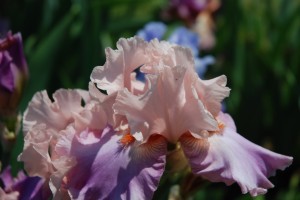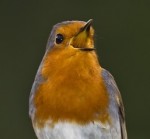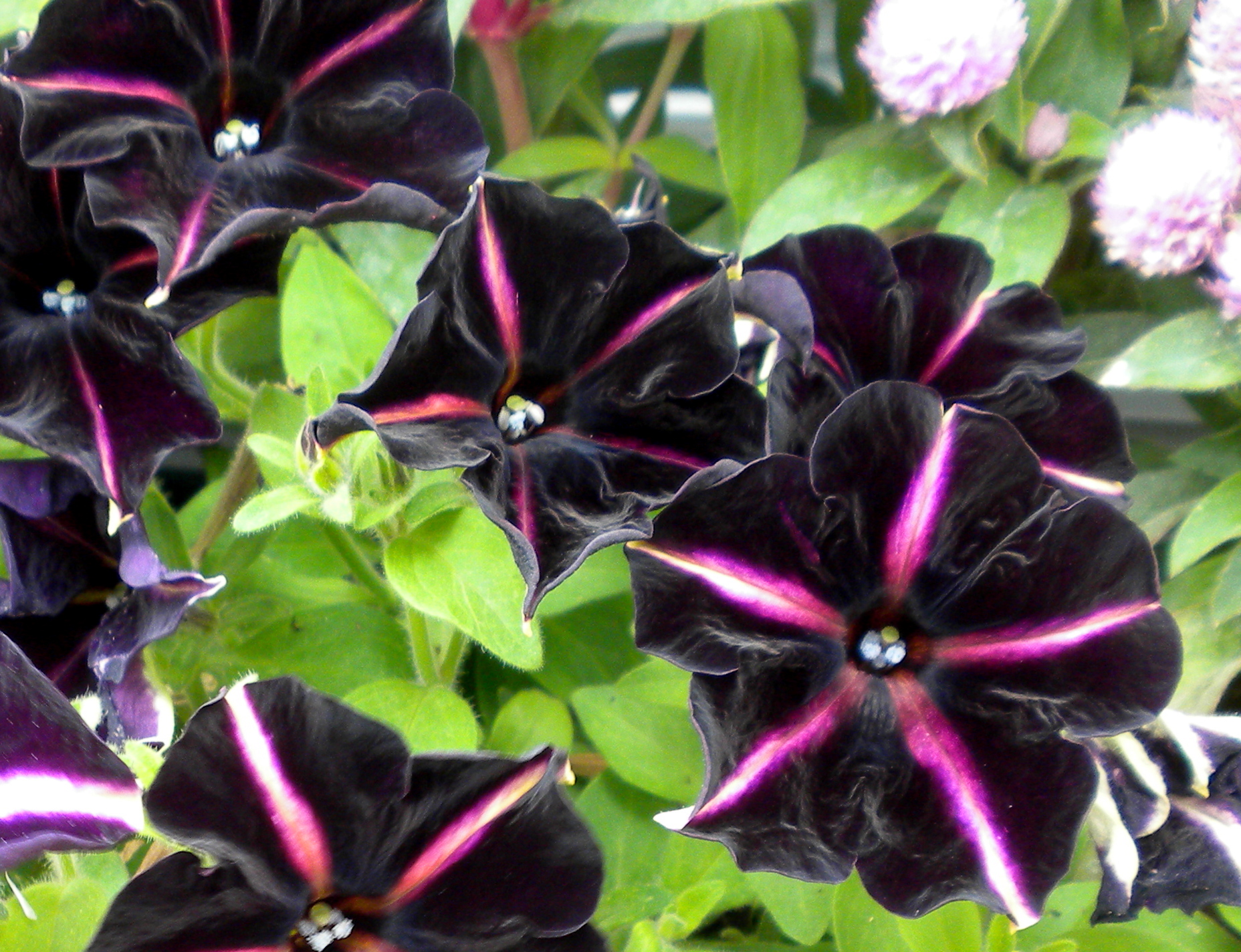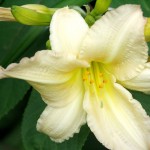Irises have been a favorite perennial since childhood. They began my gardening and were there when I retired from working the grounds at St. Francis Retreat Center.
Over the years I have come to love the wide assortment of Iris germanica. From the earliest blooming dwarfs to the big boys late in the season. Bearded Irises are long lived, sturdy, fairly drought tolerant and easy to grow, requiring little maintenance. Usually planted in late spring or early summer, they prefer full sun (6-8 hours) but will tolerate light shade; too much shade and they will not bloom. Grow in well drained garden soil. They will falter in heavy clay, an area that remains wet, or when the rhizomes are covered with mulch.
Irises grow from thick fleshy rhizomes that must be partially exposed to the sun. One end of the rhizome has the leaves and it is from this end that they spread. When planting, face this end into the garden to prevent its growing into edging or other areas.
When planting a bare-root rhizome the division end must be dried over to prevent bacterial rot. Dig a shallow donut-like trench with a mound in the middle. Place the rhizome on the top of the mound so that 1/3 of the rhizome will be above soil level and exposed to the sun. Spread the thick roots inside the trench and back-fill with soil.
If you buy Irises from a greenhouse make sure they are properly potted with 1/3 of the rhizome exposed. Plant the same as any other potted flower making sure the rhizome is slightly above the rest of the garden soil. Because Irises have thick roots, don’t be surprised if the potting mix falls away when you remove the plant.
To encourage a nice set of blooms, keep the soil moist but not wet just prior to flowering. To encourage Reblooming Iris to re-flower they should be watered as needed throughout the growing season. The rebloomers do much better in a garden that is watered regularly whereas single season bloomers are excellent in dryer areas.
Deadhead flowers singly from the main stalk, removing the spent flowering stalk by cutting it a couple of inches above the rhizome. In the fall cut the leaves back to 6-8” in an inverted-V.
There are very few pest and disease issues with this sturdy perennial. Bacterial soft rot, crown rot, fungal leaf spots, and Iris borer may occasionally become problematic. To reduce the occurrence of leaf spots and borers, remove and destroy any old leaves, stems, and plant debris. With bacterial and crown rots, remove all infected plant parts (do not compost) to avoid the spread of these diseases.
After 4-5 years divide the Irises. This is usually done 4-6 weeks after flowering. Cut leaves down to one-third their length, dig up the clump and remove soil by sloshing in a bucket of water. Snap or cut the rhizomes apart so each section has at least one healthy fan of leaves, a firm rhizome and white roots. Allow the cut end of rhizome to dry for 48 hours before replanting.
With very little care Bearded Iris will live on for generations.












